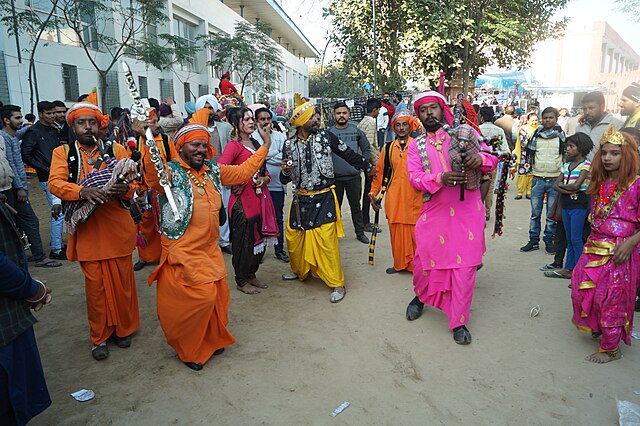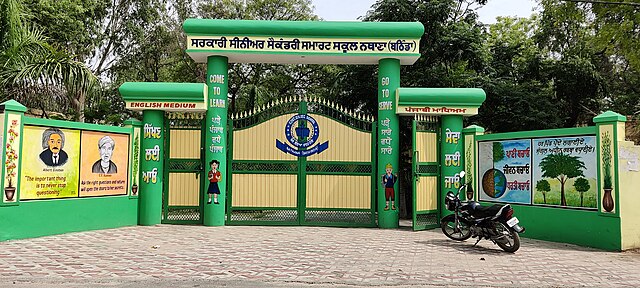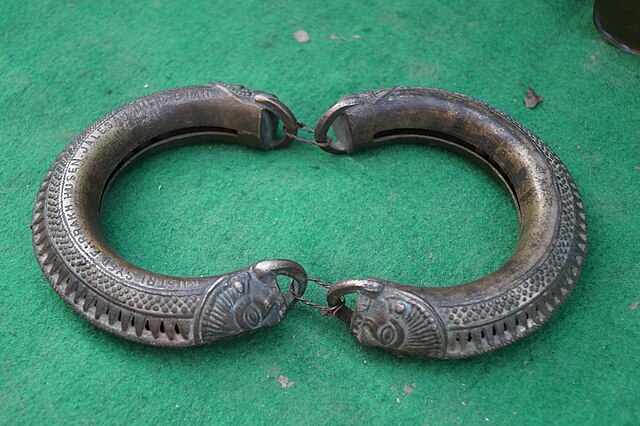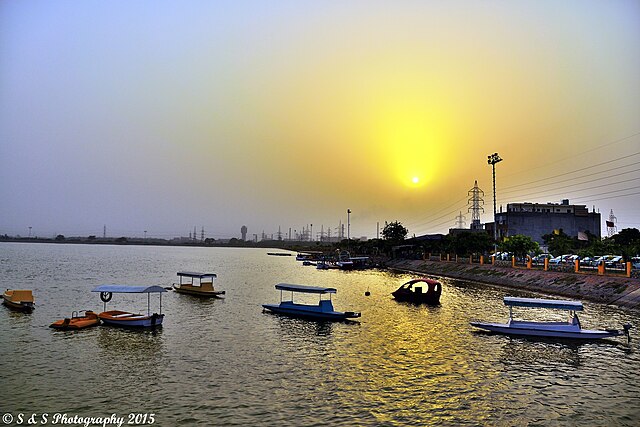Have you ever wondered what it feels like to walk through centuries of history while enjoying modern amenities? Welcome to Bathinda, a city that perfectly blends ancient heritage with contemporary progress. Located in the heart of Punjab, this fascinating destination offers visitors and residents an unique experience that’s hard to find elsewhere in India.
Bathinda isn’t just another city on the map – it’s a living testament to India’s rich cultural tapestry. From the majestic Qila Mubarak that has witnessed countless historical events to the bustling modern markets that showcase Punjab’s entrepreneurial spirit, this city has something special for everyone.
What Makes Bathinda Special?
Location and Geographic Significance
Bathinda sits strategically in the Malwa region of Punjab, approximately 227 kilometers from Chandigarh and 170 kilometers from Ludhiana. This positioning makes it a crucial junction connecting northern and western India. The city’s location along the Delhi-Bathinda highway ensures excellent connectivity to major metropolitan areas.
The geographic advantage doesn’t stop there. Bathinda serves as a gateway to Rajasthan, with cities like Bikaner and Jaipur easily accessible. This strategic location has historically made it an important trade and military center, contributing significantly to its development over the centuries.
Population and Demographics
With a population of approximately 300,000 in the city proper and over 650,000 in the metropolitan area, Bathinda represents a perfect blend of urban sophistication and small-town charm. The demographic composition reflects Punjab’s diverse cultural heritage, with Punjabis forming the majority, followed by communities from Haryana, Rajasthan, and other neighboring states.
The literacy rate stands impressively at around 70%, indicating the city’s commitment to education and development. This educated population base has contributed to Bathinda’s emergence as an important administrative and commercial center in the region.
Rich Historical Heritage of Bathinda
Ancient Origins and Early History
Bathinda’s history stretches back over a thousand years, with archaeological evidence suggesting human settlements dating to the 6th century. The city’s original name, “Tabarhindh,” reflects its ancient roots. Legend suggests that the city was founded by Bhatti Rajputs, who established it as a strategic outpost.
During the early medieval period, Bathinda gained prominence as a important fortress city. The construction of Qila Mubarak began during this era, establishing the foundation for what would become one of India’s most significant historical monuments.
Medieval Period and Mughal Influence
The medieval period marked Bathinda’s golden age. Under various rulers, including the Delhi Sultanate and later the Mughal Empire, the city flourished as a major administrative center. The architecture from this period, visible in structures like Qila Mubarak, showcases the architectural brilliance of medieval Indian craftsmanship.
Razia Sultana, the first female ruler of Delhi, was imprisoned in Qila Mubarak, adding to the fort’s historical significance. This event alone makes Bathinda a crucial site in understanding medieval Indian politics and women’s roles in governance.
Colonial Era and Independence Movement
During British rule, Bathinda continued to maintain its strategic importance. The establishment of railway connectivity in the late 19th century transformed the city into a major transportation hub. The freedom struggle saw active participation from Bathinda’s residents, with many local leaders contributing to the independence movement.
The partition of India in 1947 brought significant changes, as Bathinda became part of the newly formed Indian state of Punjab. The city adapted to these changes while preserving its cultural identity and historical significance.
Top Tourist Attractions in Bathinda

Qila Mubarak: The Crown Jewel
Architecture and Historical Significance
Qila Mubarak stands as Bathinda’s most magnificent historical monument. This ancient fort, built with bricks believed to be over 1800 years old, represents one of India’s oldest surviving fortifications. The fort’s architecture showcases the evolution of defensive structures over centuries.
The fort complex includes multiple sections, each representing different historical periods. Visitors can explore the massive walls, ancient gates, and internal structures that tell stories of bygone eras. The recent archaeological excavations have revealed artifacts that provide insights into medieval life and culture.
Visiting Hours and Entry Details
The fort remains open to visitors throughout the week, with specific timings from 9 AM to 6 PM. Entry fees are nominal, making it accessible to all visitors. Guided tours are available, providing detailed historical context and architectural insights that enhance the visiting experience.
Photography is permitted in most areas, allowing visitors to capture memories of this remarkable historical site. The fort also hosts cultural events and exhibitions, making each visit potentially unique.
Rose Garden: Nature’s Paradise
Bathinda’s Rose Garden offers a refreshing contrast to historical monuments. Spread across several acres, this beautifully maintained garden features thousands of rose varieties, creating a colorful spectacle especially during blooming season from October to March.
The garden includes walking paths, seating areas, and children’s play zones, making it perfect for family outings. Morning and evening walks here provide peaceful moments away from city hustle, while the fragrant atmosphere creates lasting memories.
Chetak Park: Family Entertainment Hub
Chetak Park serves as Bathinda’s premier family entertainment destination. The park features amusement rides, boating facilities, and spacious lawns perfect for picnics. Children particularly enjoy the various rides and games available throughout the park.
The park’s lake adds to its charm, offering paddle boating experiences that families love. Food stalls and small restaurants within the park ensure visitors can spend entire days enjoying various activities without leaving the premises.
Lakhi Jungle: Wildlife and Nature Reserve
Located on Bathinda’s outskirts, Lakhi Jungle provides nature enthusiasts with opportunities to explore Punjab’s natural heritage. This protected area houses various wildlife species and offers trekking trails for adventure seekers.
The jungle’s diverse ecosystem includes both flora and fauna typical of the region. Bird watching opportunities abound, with many migratory species visiting during winter months. The peaceful environment makes it ideal for meditation and nature photography.
Cultural Significance and Traditions

Festivals and Celebrations
Bathinda celebrates Punjab’s rich festival calendar with great enthusiasm. Vaisakhi, marking the harvest season and Sikh New Year, sees the entire city come alive with processions, music, and traditional dances. The celebrations reflect the deep agricultural roots of the region.
Diwali, Holi, and Dussehra are celebrated with equal fervor, showcasing the city’s secular character. Local festivals unique to the region add cultural diversity, creating year-round celebration opportunities that visitors can experience.
Local Arts and Crafts
The city maintains strong traditions in handicrafts, particularly textile work and pottery. Local artisans create beautiful Phulkari embroidery, a traditional Punjabi art form that has gained international recognition. These crafts represent centuries-old techniques passed down through generations.
Pottery making continues in several localities, with artisans creating both functional and decorative pieces. Visitors can observe these craftsmen at work and purchase authentic handmade items as souvenirs.
Economy and Industrial Development
Agriculture and Farming
Agriculture forms the backbone of Bathinda’s economy. The fertile Malwa region produces wheat, rice, cotton, and various cash crops. Modern farming techniques combined with traditional knowledge have made local agriculture highly productive and sustainable.
The agricultural prosperity supports numerous related industries, including grain processing, agricultural equipment manufacturing, and fertilizer production. This agricultural base provides employment to thousands of families in and around the city.
Thermal Power Plant and Energy Sector
The Guru Nanak Dev Thermal Plant, one of Punjab’s largest power generation facilities, significantly contributes to Bathinda’s industrial landscape. This modern facility not only provides employment but also supports the region’s energy requirements.
The plant’s presence has attracted various supporting industries and services, creating a comprehensive industrial ecosystem. Technical education institutions have also developed to support the skilled workforce requirements of this sector.
Cotton and Textile Industry
Bathinda’s cotton production excellence has naturally led to textile industry development. Several textile mills and processing units operate in the region, creating value-added products from local cotton production.
This industry provides employment opportunities ranging from skilled technical positions to general labor, supporting thousands of families. The textile sector’s growth continues to attract investment and technological advancement.
Education and Healthcare Facilities
Educational Institutions
Bathinda boasts several reputable educational institutions serving students from across Punjab and neighboring states. The Central University of Punjab, established here, has elevated the city’s academic profile significantly.
Various colleges offer undergraduate and postgraduate programs in diverse fields including engineering, medicine, arts, and commerce. The presence of quality educational institutions has made Bathinda an attractive destination for students and academic professionals.
Healthcare Infrastructure
Healthcare facilities in Bathinda have improved dramatically over recent years. Government and private hospitals provide comprehensive medical services, including specialized treatments previously unavailable locally.
The Guru Gobind Singh Medical College and Hospital serves as the region’s premier medical institution, providing both education and healthcare services. Various specialty clinics and diagnostic centers ensure residents have access to quality healthcare without traveling to distant cities.
Transportation and Connectivity

Railways and Train Connectivity
Bathinda Junction is a major railway station connecting the city to Delhi, Mumbai, Kolkata, and other major Indian cities. The railway connectivity makes Bathinda easily accessible for both business and leisure travelers.
Regular passenger trains and express services ensure convenient travel options. The station’s modern amenities and facilities make waiting and traveling comfortable for passengers of all ages.
Road Networks and Bus Services
The city enjoys excellent road connectivity through national and state highways. Regular bus services connect Bathinda to major Punjab cities and neighboring states. The road network quality has improved significantly with recent infrastructure development projects.
Private transportation options including taxis and auto-rickshaws provide convenient local travel. The city’s compact size makes most destinations easily reachable within short travel times.
Air Connectivity
While Bathinda doesn’t have a commercial airport, the nearest airports in Chandigarh and Amritsar are well-connected by road. Plans for developing air connectivity continue to be discussed, which would further enhance the city’s accessibility.
For now, road and rail connections adequately serve the transportation needs of residents and visitors. The strategic location ensures that major airports remain within reasonable travel distance.
Local Cuisine and Food Culture
Traditional Punjabi Dishes
Bathinda’s food culture reflects authentic Punjabi cuisine at its finest. Local restaurants serve traditional dishes like Makki di Roti with Sarson da Saag, representing the agricultural heritage of the region. These dishes use locally grown ingredients, ensuring freshness and authentic flavors.
Chole Bhature, Amritsari Kulcha, and various paranthas remain popular breakfast and lunch options. The generous use of pure ghee and traditional cooking methods creates flavors that food enthusiasts remember long after their visit.
Popular Restaurants and Eateries
The city offers dining options ranging from street food stalls to upscale restaurants. Local dhabas serve authentic Punjabi food in traditional settings, while modern restaurants cater to diverse tastes including Chinese, Continental, and South Indian cuisines.
Sweet shops specializing in traditional Indian mithai attract both locals and visitors. Jalebi, Gulab Jamun, and locally made sweets provide perfect endings to satisfying meals.
Living in Bathinda: Residential Areas and Lifestyle
Best Areas to Live
Bathinda offers various residential areas catering to different preferences and budgets. Model Town and Civil Lines represent upscale neighborhoods with modern amenities and good infrastructure. These areas attract professionals and families seeking comfortable living environments.
Traditional areas like Dhobi Bazaar and Kishan Pura offer more affordable housing options while maintaining proximity to the city center. The choice of residential areas ensures that people with varying requirements can find suitable accommodation.
Cost of Living
Compared to major Indian cities, Bathinda offers a relatively affordable cost of living. Housing costs remain reasonable, while food, transportation, and utilities are significantly cheaper than metropolitan areas.
This affordability, combined with good infrastructure and amenities, makes Bathinda attractive for families and young professionals. The quality of life versus cost ratio often surprises newcomers positively.
Shopping and Entertainment
Local Markets and Bazaars
Traditional markets like Dhobi Bazaar and Kishan Pura offer authentic shopping experiences. These markets specialize in textiles, handicrafts, and daily necessities at competitive prices. The vibrant atmosphere and friendly vendors create enjoyable shopping experiences.
Local produce markets provide fresh fruits, vegetables, and agricultural products directly from surrounding farms. This direct connection ensures freshness while supporting local farmers economically.
Modern Shopping Centers
Modern shopping complexes and malls have emerged to cater to contemporary shopping preferences. These facilities offer branded clothing, electronics, and various services under one roof, providing convenient shopping experiences.
Movie theaters within these complexes provide entertainment options for families and young people. The blend of traditional and modern shopping venues ensures all preferences are adequately served.
Climate and Best Time to Visit
Bathinda experiences a continental climate with hot summers, pleasant winters, and monsoon rains. Summer temperatures can reach 45°C, making it challenging for outdoor activities. However, early mornings and evenings remain pleasant even during peak summer months.
Winter months from November to February offer the most comfortable weather for visiting. Temperatures range from 5°C to 20°C, perfect for sightseeing and outdoor activities. This period also coincides with various festivals and cultural events.
Monsoon season brings relief from summer heat but can cause transportation difficulties. However, the post-monsoon period showcases the region’s agricultural beauty, with lush green fields creating picturesque landscapes.
Future Development and Growth Prospects
Bathinda continues to attract investment and development projects across various sectors. Infrastructure improvements, including road expansion and utility upgrades, are ongoing. These developments promise to enhance the quality of life for residents while attracting more businesses and tourists.
The city’s strategic location and existing infrastructure make it attractive for industrial development. Government initiatives supporting industrial growth in smaller cities particularly benefit Bathinda’s economic prospects.
Educational institution expansion and healthcare facility improvements continue to enhance the city’s profile as a regional center. These developments create employment opportunities while improving service availability for residents.
Conclusion
Bathinda represents the perfect blend of historical significance, cultural richness, and modern development. Whether you’re interested in exploring ancient forts, experiencing authentic Punjabi culture, or considering relocation to a growing city with affordable living costs, Bathinda offers compelling reasons to visit or make it your home.
The city’s strategic location, improving infrastructure, and strong cultural foundations position it well for continued growth and development. As Punjab’s economy diversifies and grows, Bathinda’s importance as a regional center will undoubtedly increase.
From the magnificent Qila Mubarak to bustling modern markets, from traditional festivals to contemporary educational institutions, Bathinda provides experiences that satisfy diverse interests and needs. This historic city continues to evolve while maintaining its authentic character and welcoming spirit.
Frequently Asked Questions
1. What is the best time to visit Bathinda for tourists?
The ideal time to visit Bathinda is during winter months from November to February when temperatures are pleasant (5°C to 20°C). This period offers comfortable weather for sightseeing, and you can also experience various festivals and cultural events that typically occur during these months.
2. How far is Bathinda from major cities like Delhi and Chandigarh?
Bathinda is approximately 250 kilometers from Delhi, which takes about 4-5 hours by road. Chandigarh is about 227 kilometers away, roughly a 4-hour drive. The city is well-connected by rail and road to both destinations, making it easily accessible for visitors from these major cities.
3. What are the main industries and employment opportunities in Bathinda?
Bathinda’s economy is primarily based on agriculture, thermal power generation, cotton and textile industry, and various supporting services. The Guru Nanak Dev Thermal Plant is a major employer, while agricultural processing, textile manufacturing, and educational institutions provide diverse employment opportunities for different skill levels.
4. Is Bathinda a good place to live for families?
Yes, Bathinda offers excellent family living conditions with affordable housing, good educational institutions including the Central University of Punjab, adequate healthcare facilities, and a safe environment. The cost of living is significantly lower than major metropolitan cities while providing most modern amenities and services.
5. What are the must-visit historical sites in Bathinda?
Qila Mubarak is the most significant historical attraction, being one of India’s oldest surviving forts with over 1800 years of history. Other notable sites include various sections of the fort complex, ancient gates, and archaeological areas. The city also has several gurudwaras and temples that reflect its religious and cultural heritage.

